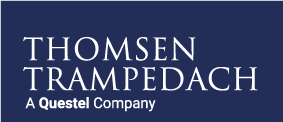Project Description
Cybersquatting in China.
How to address Cybersquatting in China?

Recent amendments to China’s Anti-Unfair Competition Law have given brand owners a stronger tool to combat cybersquatting.
The story was previously published in Asia IP magazine: http://www.asiaiplaw.com/article/39/3167/.
According to the World Intellectual Property Organization (WIPO) (released in a statement earlier this year), 2017 saw a record number of Uniform Domain-Name Dispute-Resolution Policy (UDRP) filings against cybersquatting. Cybersquatting is not only a reality for Generic top-level domains (gTLDs) and new gTLDs, but it is also a common practice frequent in the People’s Republic of China’s country code top-level domains (.cn and. com.cn). Addressing an infringer of a .cn or a .com.cn domain through cease and desist letters are often ineffective, leaving the trademark owner with the option of either going for a CNNIC ccTLD Dispute Resolution Policy (CNDRP), or purchasing the domain back from the infringer, which could be costly. However, with the recent amendment to China’s Anti-Unfair Competition Law (the AUCL)[1] the illegality of cybersquatting is now reaffirmed. Offenders risk harsher penalties than before, increasing infringers’ incentives to comply with the request from the trademark owner.
With more than 772 million Internet users in China 2017, it is no surprise that cybersquatting is also occurring under (.cn and. com.cn) top-level domains (TLDs). China’s first-to-file approach to domain names facilitates an environment where cybersquatters constantly scout for good “squatting” opportunities. This is understandable since, for most cybersquatters, the worst-case scenario would probably consist in the cybersquatter merely losing rights to the domain name and wasting the Registrar (the Registrar is responsible for registering the domain) subscription fee, which does little to prevent cybersquatters from registering a domain name in bad faith. This is in stark contrast to the United States’ legislation where the Anti-Cybersquatting Consumer Protection Act provides plaintiffs with the opportunity to apply for statutory damages ranging from $1,000 to $100,000 per domain name. Hence, in contrast to China, a US-based cybersquatter (the registrant of the domain name) is often more willing to cancel the registration due to the risk of having to pay damages to the trademark owner, and in some cases, the cybersquatter will even transfer the domain back to the trademark owner free of charge. Due to this, however, few cybersquatters are indicating that they are US citizens in the WHOIS database.
So what can a trademark owner do in case a third party has registered their trademark as a domain name under a cn. or com.cn TLD?
First off, the trademark owners should decide how important ownership of the domain name is. If ownership is secondary, and the domain is pointing towards infringing content, a cease and desist letter to the registrant, a take down notification to the Hosting Provider (hosting of the website), together with a notification to the Registrar, should potentially suffice. If the infringing content has been taken offline by either the Registrant or Hosting Provider, or if the domain has been suspended by the Registrar the domain should be placed under observation until it expires. It can then, be bought when available again for registration for a defensive purpose or simply kept under observation for the reappearance of new infringing content.
However, if ownership is of importance, there are several steps the trademark owner can take to potentially secure the domain name.
- The first option is the least time consuming, though unfortunately often the least successful. It constitutes of the trademark owner making clear to the cybersquatter (the registrant) that their actions are infringements, which are actionable under Chinese law. The trademark owner can point out, or merely threaten, to take legal steps in case the cybersquatter does not reply. If the trademark owner at all receives a reply to this, it is likely that it is an impolite message including an offer to buy the domain, often similar to the cost of a .CN Dispute Resolution Policy (CNDRP). Such a reply is, however, not completely worthless, as it can be useful as evidence proving bad faith in a subsequent CNDRP filing.
- The second option is to request the registrar to cancel the domain name registration due to the infringement and subsequently try to buy the domain when the redemption period is over. It can, however, be hard to prove the illegality of the domain to the registrar, especially if the domain is not pointing towards a website with illegal content and/or where the domain is not used for phishing.
- The third alternative is to file a CNDRP. This option comes with an attached cost (the total fee ranges from 8000 Renminbi (RMB) to 24,000 RMB dependent on the number of disputed domain names and panelists) and several requirements must be met:
- The domain must be registered in bad faith.
- The cybersquatter does not have any rights to the name.
- The domain has not been in control of the registrant for more than 2 years (as of June 2019, this has been extended to 3 years)[2].
- The complainant has the trademark registered in China.
- The good news is that from August 2019, the WIPO Arbitration and Mediation Center have started offering domain name dispute resolution services for .CN and .中国 (China). Making the undertaking of a CNDRP a bit easier than before. [3]
- Where undertaking a CNDRP is too expensive, and where warning letters or notifications have not led to the desired outcome, the trademark owner is left with the option of purchasing the domain (hopefully at a lower price than the CNDRP cost). However, in most cases purchasing the domain from a cybersquatter is undesirable, as this would incentivize further cybersquatting. In this situation, and in the light of the new amendment of People Republic of China’s (PRC) Anti-Unfair Competition Law (AUCL), the trademark owner should make it clear that the cybersquatter could be subject for hefty fines.
How can China’s new amendment to the Anti-Unfair Competition Law be used by brand owners to fight cybersquatting?
There were substantial amendments to the Anti-Unfair Competition Law, passed in November 2017, and that came into force on January 1, 2018, and regarding the fighting of cybersquatting, this amendment is interesting for two reasons. First, Chapter 2 (第二章 不正当竞争行为), Article 6 (第六条), of the new law states that the following is considered to be confusing and thereby constituting unfair competition: “Unauthorized use of the distinctive part of another’s domain name, website name or webpage which has gained a certain degree of influence.”[4] This indicates that registering a similar or identical domain name as an already existing website is an act of unfair competition. Interestingly, the same applies to using any well-known website feature in a confusing fashion.
Further, the amendment is interesting in that it also enhances the punishment for business operators engaging in unfair competition. Article 18 states (第十八条) that: ”if an operator violates the provisions of Article 6 of this Law and commits a confusing act, the local Administrations for Industry and Commerce shall order it to stop the illegal act and confiscate the illegal goods. If the illegal business amount is more than 50,000 yuan, a fine of not more than five times the illegal business amount may be imposed concurrently; if there is no illegal business operation or the illegal business amount is less than 50,000 yuan, a fine of not more than 250,000 yuan may be imposed. If the circumstances are serious, the business license will be revoked”.[5]
In other words, the local Administrations for Industry and Commerce[6] may impose fines of up to 250,000 RMB.[7] In the previous version, no maximum amounts were described for IP related infringements. In light of the new amendment, one could argue that the Chinese system compares favorably to the US. The US statutory damages system is dependent on the threat of the trademark proprietor suing the cybersquatter, while in China complaints may be made to the AICs at no extra cost.
The new amendment changes the game in favor of the trademark owner, and when sending a C&D letter to the registrant of a .cn and/or a.com.cn domain, it is, therefore, important to include a reference to the AUCL.
It should, however, be noted, that even though the new amendment came into effect on the 1st of January 2018, no guiding case law has been settled and it is, therefore, unclear to what degree the AICLs will respond to cybersquatting complaints. Nonetheless, this should not stop the trademark owner from referring to the AUCL in their C&D.
Thomsen Trampedach helps clients with addressing both small and large scale cybersquatters. We send warning letters in the local language, store the evidence in a format accepted by the courts and help our clients with CNDRP filings. For more information feel free to contact us.
For more information on how we can help you protect your IPR in China please visit this section: BRAND PROTECTION CHINA and on how to protect your brand on Chinese Marketplaces HERE
[1] http://www.npc.gov.cn/npc/xinwen/2017-11/04/content_2031432.html
[2] https://www.wipo.int/amc/en/new/cn.html?utm_source=WIPO+Newsletters&utm_campaign=df9ee713f5-EMAIL_CAMPAIGN_2019_08_06_10_36&utm_medium=email&utm_term=0_bcb3de19b4-df9ee713f5-254550833
[3] http://www.wipo.int/edocs/lexdocs/laws/en/cn/cn164en.pdf
[4] Unofficial translation of: “(三)擅自使用他人有一定影响的域名主体部分、网站名称、网页等”.
[5] Unofficial translation of: “第十八条 经营者违反本法第六条规定实施混淆行为的,由监督检查部门责令停止违法行为,没收违法商品。违法经营额五万元以上的,可以并处违法经营额五倍以下的罚款;没有违法经营额或者违法经营额不足五万元的,可以并处二十五万元以下的罚款。情节严重的,吊销营业执照。”
[6] AICs, a national organisation with local departments in every administrative region in China, see http://samr.saic.gov.cn/index.html
[7] This is a sliding scale: 250,000 RMB when the illegal turnover is less than 50,000 RMB and up to five times the illegal turnover when the illegal turnover is < 50,000 RMB.
